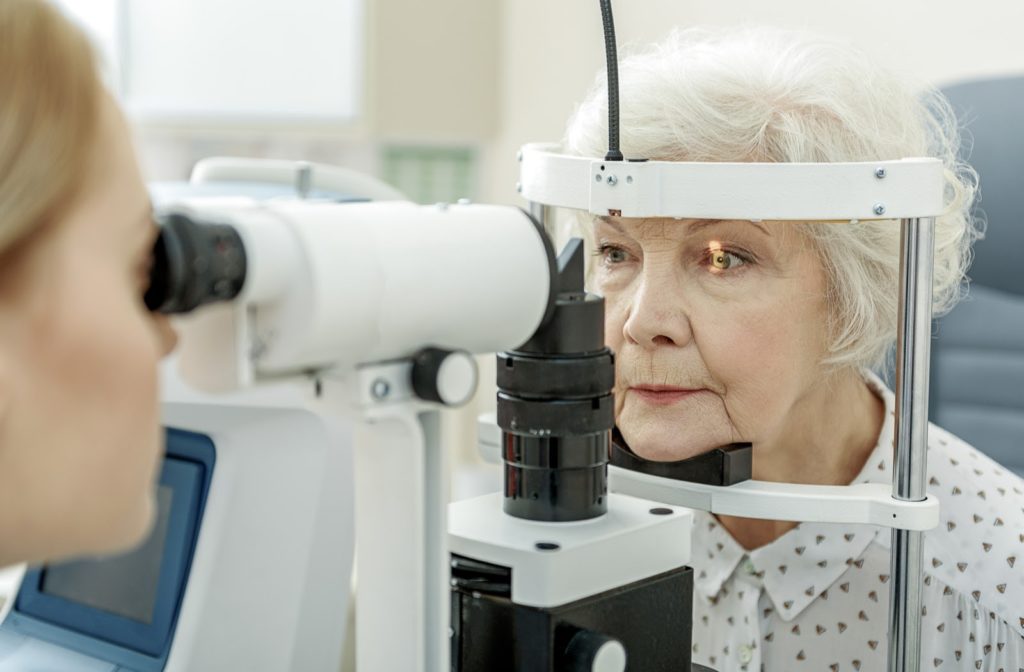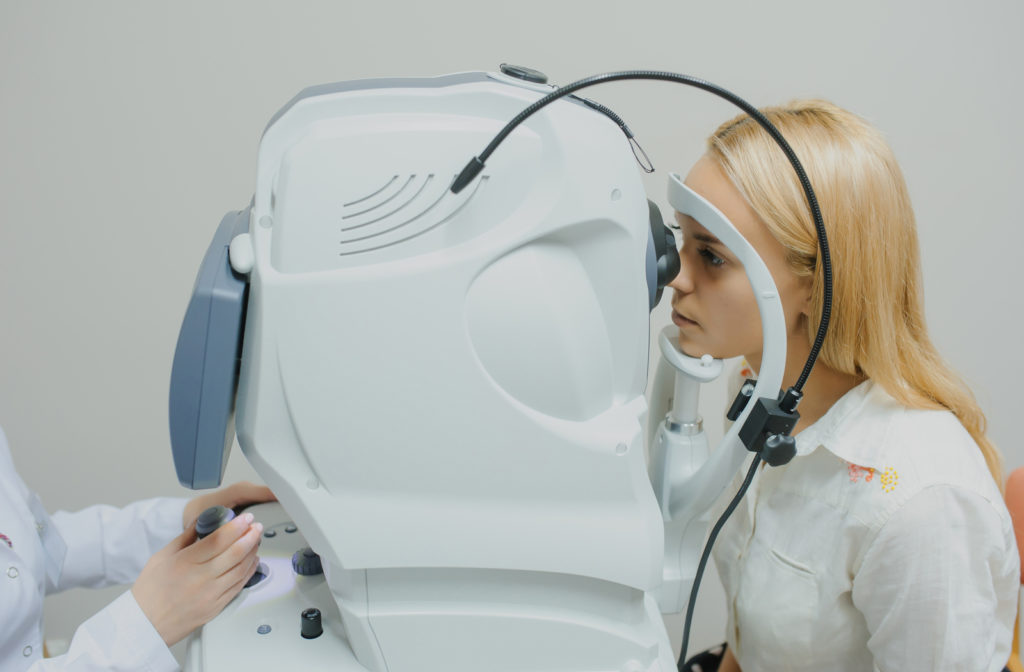Your optometrist uses several different technologies during a comprehensive eye exam, including optical coherence tomography. It’s an effective tool for diagnosing eye diseases, but what is this technology, how does it work, and what can it detect? Learn more about optical coherence tomography below.
What is OCT?
Optical coherence tomography (OCT) is a technology used to capture high-resolution, cross-sectional photos of your retina. A laser records images of the layers of the retina and optic nerve, but OCT is a non-invasive technology with minimal health risks. OCT is like an ultrasound that uses light instead of sound.
OCT-captured images of the retinal layers are compared and retinal thickness is measured to diagnose potential eye diseases. Many eye diseases don’t show symptoms until they have significantly progressed, and OCT is vital to detect any problems in their initial stages.
Why is OCT Used?
OCT is used for a variety of reasons. Your optometrist may wish to monitor the progress of your eye disease, identify any retinal swelling, or assess your current eye health during an eye exam. OCT is becoming a must-have, effective technology for several reasons:
- It’s non-invasive
- It has no radiation
- It’s painless
- It’s quick
This technology is an effective tool to ensure your ocular health. If your optometrist recommends the use of OCT, how does it work, and what should you expect to happen?
How Does OCT Work?
OCT is similar to an ultrasound, though it uses light waves instead of sound waves to record an image. Light waves reflect off of different depths within the sample to reconstruct a profile of the patient’s eye. A laterally scanned light beam creates a 3D image.
The created images allow your optometrist to see the retina’s different layers so they can measure its thickness and check for irregularities. Retinal examinations help with the diagnosis and planning of treatments.
An OCT eye scan can effectively diagnose eye diseases in their initial stages, and early detection is critical to treating many eye conditions. Because of this, your optometrist may use OCT during your comprehensive eye exam, so how does this procedure work?
How is OCT Used?
Before your OCT eye scan, your optometrist may widen your pupils using dilating eye drops to see more of your eye. The machine scans your eyes without direct contact for approximately 5 to 10 minutes. After reviewing your eye scan results, potential eye conditions are diagnosed, and a treatment plan is created.

What Can OCT Detect?
OCT is effective, but what is it used to detect? This technology records images of the retina, optic nerve, and blood vessels to identify several diseases such as:
Age-related macular degeneration
Age-related macular degeneration (AMD) affects your central vision while your peripheral vision remains unaffected. The central retina, also known as the macula, thins and wears down as you get older, and your ability to read, drive, and recognize faces may worsen. It’s a leading cause of vision loss in people aged 55 and older. There are two variants of AMD:
Dry AMD occurs when the macula becomes thinner with age and tiny clumps of protein develop behind the retina, called drusen. This slowly affects your central vision, causing distortion and dimming. Wet AMD is an advanced stage of the disease, characterized by abnormal blood vessels growing and leaking fluid or blood into the macula. The damaged tissue eventually develops into scar, which results in a permanent blind spot. Wet AMD is considered an emergency and requires medical attention. Contact your optometrist if you experience:
- Gradual or sudden changes in your vision
- Changes in your perception of colour
- Sensitivity to glare
- Lines that should be straight appearing wavy
- Dark, blurry, or whited-out areas in your central vision
Glaucoma
Glaucoma is an eye disease that causes progressive damage to your optic nerve. There are several variants, and many present no symptoms until vision loss occurs. Glaucoma can be hereditary, so is it important to get your eyes checked if anyone in your immediate family has been diagnosed with glaucoma. Lost eyesight is irrecoverable, so regular eye examinations are vital to ensure your ocular health.
Glaucoma is one of the leading causes of blindness, but an early diagnosis can prevent or slow future vision loss. Visit your optometrist if you experience:
- Eye pain
- Blurred vision
- Severe headaches
- Blind spots in your vision
- Halos around lights
Diabetic retinopathy
Diabetic retinopathy is a complication related to the blood vessels in the retina. This condition may have no initial symptoms and can develop in anyone affected by type 1 or 2 diabetes. There are two variants of diabetic retinopathy: non-proliferative and proliferative.
Non-proliferative diabetic retinopathy is the initial stage of this disease. Small bulges emerge from the blood vessel walls and leak fluid and blood into the retina. Fibres in the retina may begin to swell.
Proliferative diabetic retinopathy is the advanced stage of this disease. Damaged blood vessels cannot provide adequate blood supply to the retina so new, abnormal blood vessels develop. These new vessels can bleed into the centre of the eye (vitreous). Scar tissue may develop from these new blood vessels, which can result in permanent vision loss and further complications.
If the abnormal blood vessels affect the regular fluid flow in your eye, pressure can build and damage the optic nerve.
If you have diabetes, you need regular exams to ensure your eyes are healthy. Visit your optometrist right away if your vision suddenly changes or becomes blurry. Other symptoms include:
- Fluctuating vision
- Spots or floaters in your vision
- Dark areas within your vision
- Impaired colour vision
- Vision loss
If you have diabetes or are at risk for any of these conditions, your optometrist will likely perform an OCT scan to assess your eye health. If you experience any symptoms of these diseases, you should receive a comprehensive eye exam to diagnose any potential problems.
OCT Can Protect Your Ocular Health
OCT is an effective and non-invasive imaging technology to assess your eye’s health and diagnose any potential issues in their initial stages. If you’re suffering from eye disease symptoms, or need an eye exam, book an appointment.



